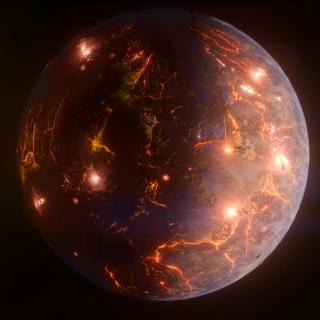OCAM2 llega al Gran Telescopio Canarias (GTC). En los próximos días, arrancan los trabajos para instalar esta cámara ultrasensible en su sistema de óptica adaptativa actualmente en desarrollo. Con este nuevo dispositivo, el más rápido de sus características hasta la fecha, el telescopio óptico más grande del mundo podrá sacar aún mayor partido a su espejo primario de 10,4 metros de diámetro: según los responsables de la nueva cámara, OCAM2 permitirá que el GTC obtenga imágenes con la misma calidad que las que registra el telescopio espacial Hubble.
Como en cualquier otro telescopio terrestre, una de las principales cortapisas del GTC, que gestiona el Instituto de Astrofísica de Canarias (IAC), es la propia atmósfera. A pesar de ubicarse en el Observatorio Roque de los Muchachos (La Palma) y bajo uno de los cielos de mayor calidad del mundo, las turbulencias atmosféricas restan nitidez a las observaciones. Para evitarlo, se emplea una técnica denominada óptica adaptativa, un sistema que corrige en tiempo real las turbulencias para que el astrónomo reciba una imagen más clara.
Los sistemas de óptica adaptativa deben trabajar con velocidades muy elevadas y en niveles de iluminación muy débiles. En este terreno es donde OCAM2 tiene sus puntos fuertes, pues es capaz de captar 1.500 imágenes por segundo en un estado próximo a la oscuridad absoluta (menos de 1 electrón de iluminación). “El GTC será el primer telescopio del mundo en beneficiarse de esta innovadora tecnología que permitirá obtener imágenes a una resolución inigualable”, explica Jean-Luc Gagh, ‘padre’ de este ingenio desarrollado por los Laboratorios de Astrofísica de Marsella y de Grenoble; y el Observatorio de Haute-Provence.
“Este tipo de cámaras representan un punto de inflexión en el campo de la óptica adaptativa”, explica el jefe del proyecto, Philippe Feautrier. Comparada con los instrumentos de la generación anterior, OCAM2 ofrece una resolución cuatro veces superior y multiplica por tres la velocidad, lo que situará los niveles de sensibilidad del GTC en pie de igualdad con Hubble, el telescopio espacial de la NASA que –al orbitar sobre la Tierra a unos 600 kilómetros sobre el nivel del mar- ha logrado vencer la barrera de las turbulencias atmosféricas.
La cámara OCAM2 y su detector ultrasensible se incorporarán al sistema de óptica adaptativa del telescopio palmero, GTCAO. En concreto, se integrará en su sensor de frente de onda. Una vez instalado en los laboratorios del IAC, serán precisos dos años de ajustes para que el sistema óptico adaptativo esté totalmente operativo.
Colaboración hispano-francesa
El proyecto OCAM es el resultado de cinco años trabajo, financiado por la Comisión Europea, el Observatorio Europeo Austral y el Institut National des Sciences de l’Universe (CNRS). Tras conocer y analizar la primera versión de la cámara, el GTC firmó en 2009 un acuerdo de colaboración científica con el equipo francés para la concepción y producción de esta segunda versión del dispositivo - OCAM2- adaptada a las exigencias del telescopio canario.
Más información: Dolores Bello dolo.bello [at] gtc.iac.es (dolo[dot]bello[at]gtc[dot]iac[dot]es); 922 425 720


